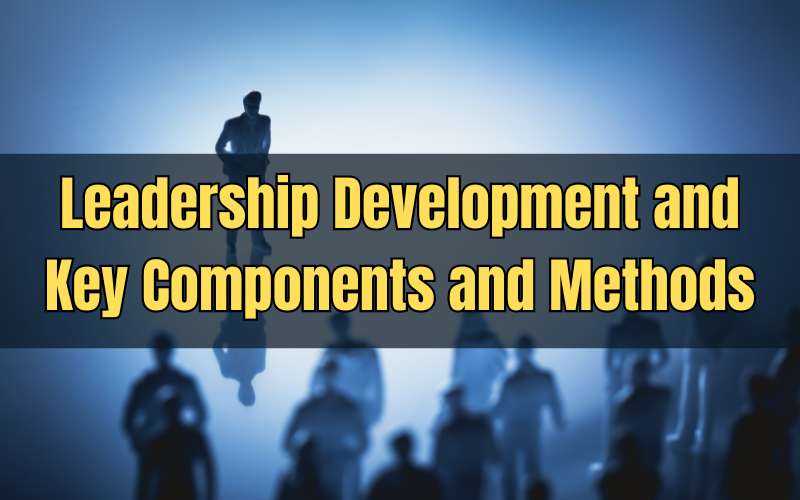Leadership development is an essential aspect of organizational growth and success. In today’s dynamic business landscape, effective leadership is crucial for driving innovation, motivating teams, and achieving strategic objectives. This article explores the significance of leadership development, its key components, methods, benefits, challenges, successful programs, the role of technology, future trends, and concludes with insights on fostering a culture of leadership within organizations.
Introduction to Leadership Development
Leadership development refers to the process of enhancing the abilities, skills, and traits of individuals to become effective leaders. It encompasses various aspects, including self-awareness, communication, emotional intelligence, decision-making, and adaptability. Investing in leadership development is vital for organizations to cultivate a pipeline of capable leaders who can navigate complexities, inspire teams, and drive organizational success.
Key Components
Self-awareness and self-assessment
Leadership development begins with individuals understanding their strengths, weaknesses, values, and leadership style. Self-assessment tools and feedback mechanisms help leaders gain insights into their behaviors and preferences, enabling them to leverage their strengths and address areas for improvement.
Communication skills
Effective communication is fundamental to leadership. Leaders must articulate their vision, provide clear instructions, actively listen to others, and foster open dialogue within teams. Developing communication skills involves mastering verbal and non-verbal communication, storytelling, and influencing techniques.
Emotional intelligence
Emotional intelligence encompasses the ability to recognize, understand, and manage one’s emotions, as well as those of others. Leaders with high emotional intelligence build trust, resolve conflicts, and motivate their teams effectively. Leadership development programs often include training in emotional intelligence to enhance interpersonal relationships and team dynamics.
Decision-making abilities
Leaders are frequently faced with complex and ambiguous situations that require sound judgment and decision-making skills. Leadership development involves honing analytical thinking, problem-solving, and risk assessment capabilities to make informed and timely decisions that align with organizational goals.
Adaptability and resilience
In today’s rapidly changing Business environment, leaders must be agile and resilient in the face of adversity. Leadership development programs focus on fostering adaptability, flexibility, and the ability to thrive in uncertain circumstances. Building resilience equips leaders to navigate challenges, bounce back from setbacks, and inspire confidence in their teams.
Methods
Coaching and mentoring
Coaching and mentoring relationships provide personalized guidance, support, and feedback to aspiring and current leaders. Experienced mentors offer valuable insights, share experiences, and help individuals navigate their leadership journey by providing encouragement and accountability.
Training programs and workshops
Formal training programs and workshops offer structured learning experiences on various leadership topics, such as strategic planning, conflict resolution, and team building. These programs often incorporate interactive activities, case studies, and role-playing exercises to enhance learning and skill development.
Experiential learning
Experiential learning involves putting leadership skills into practice through real-world challenges and projects. Hands-on experiences allow leaders to apply theoretical knowledge, test their capabilities, and learn from both successes and failures. Leadership development initiatives may include simulations, outdoor activities, and immersive learning experiences to facilitate experiential learning.
Feedback and reflection
Feedback mechanisms, such as 360-degree assessments and performance evaluations, provide valuable insights into leadership effectiveness and areas for improvement. Leaders are encouraged to solicit feedback from peers, subordinates, and supervisors, and reflect on their experiences to identify growth opportunities and refine their leadership approach.
Benefits leadership development
Improved employee morale and engagement
Effective leadership fosters a positive work environment where employees feel valued, motivated, and engaged. Strong leadership encourages collaboration, recognition of contributions, and opportunities for professional growth, leading to higher levels of employee satisfaction and retention.
Higher productivity and performance
Leadership development enhances individual and team performance by equipping leaders with the skills and tools needed to inspire and empower their teams. Engaged and motivated employees are more productive, innovative, and committed to achieving organizational objectives, resulting in improved business outcomes and competitive advantage.
Succession planning for leadership development
Developing a pipeline of talented leaders ensures continuity and stability in leadership roles, especially during times of transition or succession. Succession planning involves identifying high-potential individuals, providing them with opportunities for growth and development, and preparing them to assume leadership responsibilities in the future.
Enhanced organizational culture
Strong leadership sets the tone for organizational culture and values, shaping the attitudes, behaviors, and norms within the workplace. Leaders who prioritize transparency, integrity, and inclusivity foster a culture of trust, respect, and collaboration, where employees feel empowered to contribute their best and align with the organization’s mission and values.
Challenges Leadership Development
Despite its importance, faces several challenges, including:
Identifying future leaders
Identifying individuals with leadership potential can be challenging, as leadership traits may not always be evident or easily quantifiable. Organizations must implement robust talent identification processes and succession planning strategies to identify, nurture, and retain top talent.
Budget constraints
Allocating resources for leadership development initiatives requires financial investment, which may be constrained by competing priorities and budget limitations. Organizations must balance short-term cost considerations with the long-term benefits of leadership development and demonstrate the return on investment to secure funding and support.
Measuring effectiveness
Measuring the impact and effectiveness of leadership development programs can be complex, as leadership outcomes are multifaceted and influenced by various factors. Organizations must define clear objectives, establish relevant metrics, and leverage assessment tools to evaluate the success of leadership development initiatives and make data-driven decisions.
Overcoming resistance to change
Implementing leadership development initiatives often requires organizational change and buy-in from stakeholders at all levels. Resistance to change, fear of the unknown, and entrenched attitudes and behaviors can hinder the adoption of new leadership practices and impede progress. Leaders must communicate effectively.
Know more about author: Prince Khanuja Founder of Khanuja Group.




